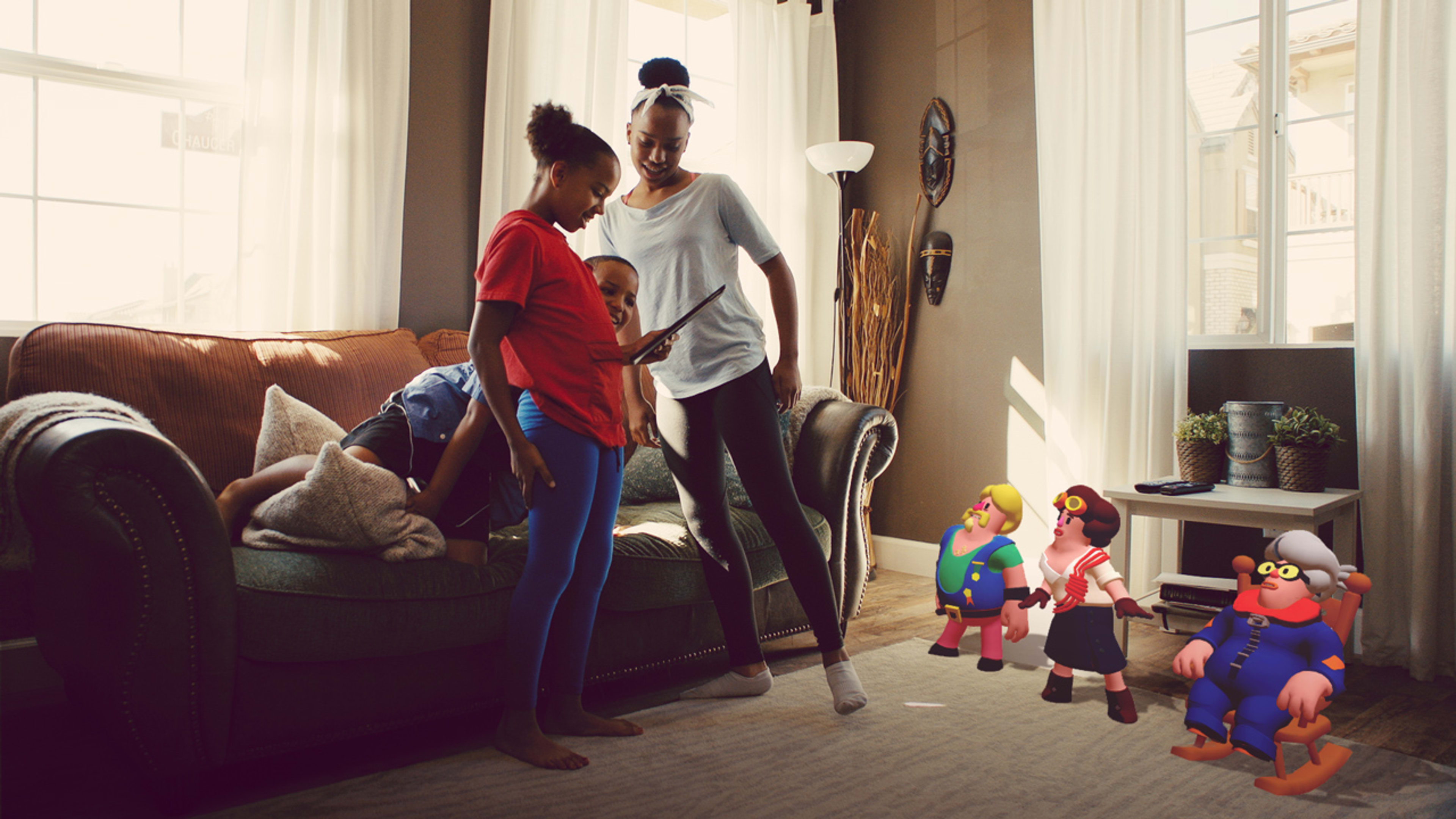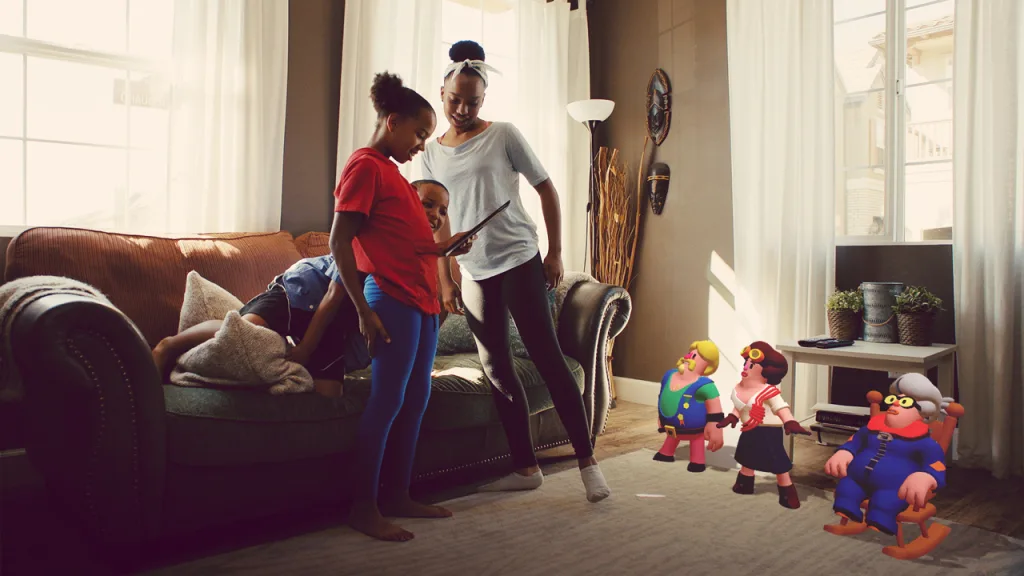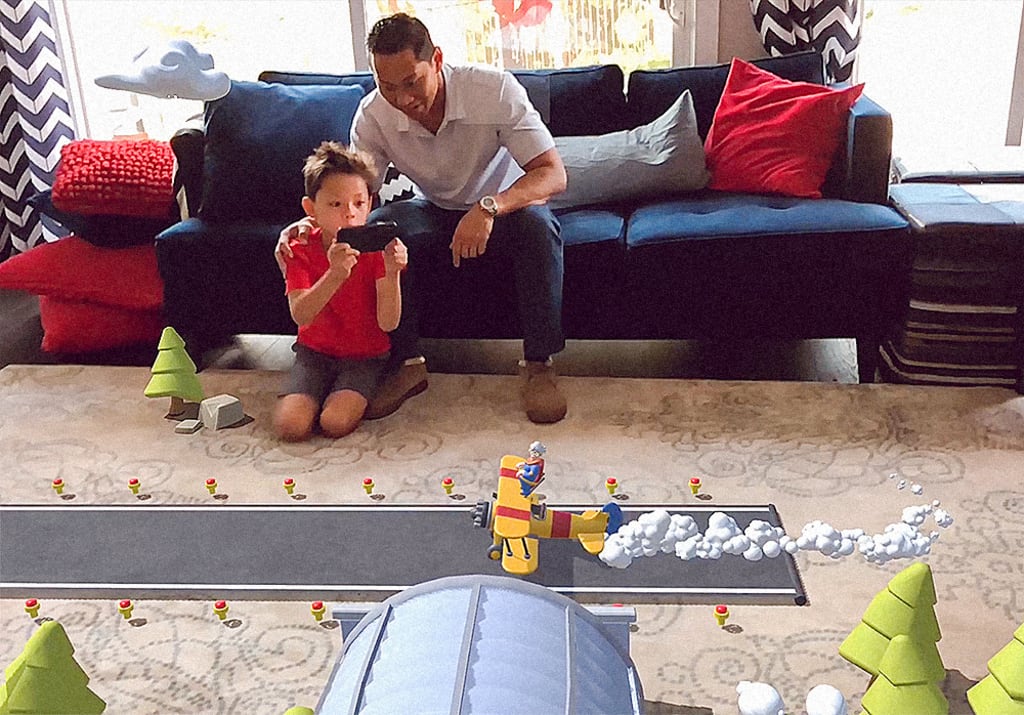I’m sitting on the floor of Fast Company‘s conference room, watching Little Red Riding Hood face off with a leather-jacket-wearing Big Bad Wolf. The wolf convinces her to tell him where her grandma’s house is, and then dashes off into the forest. Instantly, Little Red is horrified.
“What’s wrong?” I ask her.
“I don’t know, but something definitely feels wrong,” she says.
Together with the help of a little pig whose house the wolf blew down, we figure out how to use Little Red’s clever inventions to outsmart the wolf and save Grandma.
[Image: courtesy Within]Little Red the Inventor, directed by the designer Tuna Bora, is one of the first stories published on the new augmented reality (AR) platform Wonderscope. The children’s story app, which is the brainchild of VR art guru Chris Milk and his immersive storytelling company Within, launches today with stories that will spring to life through an iPhone or tablet, with the real world as their backdrop.
Wonderscope is Milk’s first major foray into AR, alongside Aaron Koblin, Within’s cofounder and CTO. Milk is best known for creating VR experiences, including a recent collaboration with the band OK Go, while Koblin, who previously worked at Google, is famed for his interactive visualization design and work with VR. While the duo have focused on VR experiences in the past, the ubiquity of augmented reality technology, which is now on millions of smartphones, was too tempting to pass up. Within, which raised a $40 million Series B round of financing in summer 2017, is poised to turn Wonderscope into the premier AR storytelling platform for kids.
Wonderscope is focused squarely on children, rather than AR storytelling in general. Because these stories are easier to see when they’re told in miniature, Milk believes they’re best for 7- to 10-year-olds. “An audience that likes to watch small stories taking place in miniature and likes to watch the same stories over and over again? That’s not the current version of me–that’s the 7-year-old version of me,” he says.
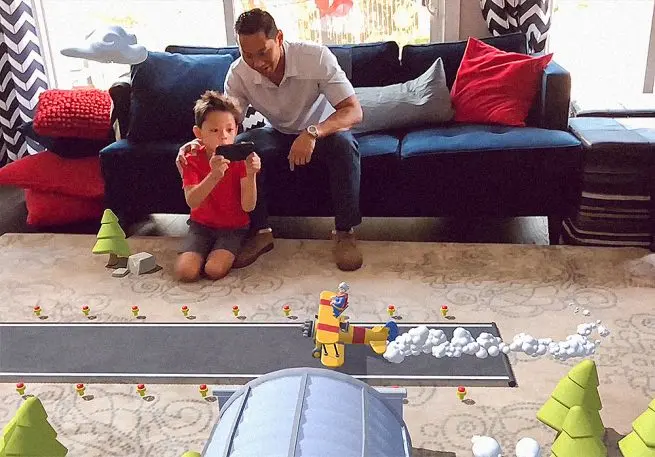
Rather than adding dopamine hits to Wonderscope, Milk is mostly focused on trying to tell a good story. But what that means in augmented reality is still up in the air. Initially, Wonderscope started as a demo for Apple’s augmented reality developer kit launch in 2017. Milk and his team based their first AR story about Goldilocks and the three bears on the conventional paradigm of reading a storybook: The child narrated the entire story out loud, with the app recognizing each line to move the animated scene forward in time. But when the team started testing the story with kids after the event was over, they learned that kids didn’t want to narrate and watch the story–they wanted to be part of it. Now, the kids become Little Red’s imaginary friend, reading dialogue that appears on their screens to which the character then directly responds. This feels particularly realistic because of a feature that enables the character to look directly at the user, wherever she is in the scene, making it feel like the animation is talking directly to you.
The team also realized that kids really want to interact with as many parts of the AR scene as possible. Rather than looking to more traditional media, Koblin says he also took inspiration from disciplines like stage design, toy design, and interaction design to create Wonderscope’s next stories. For instance, A Brief History of Stunts by Astounding People, which is also launching with the app today, asks the user to find different parts of an airplane that are scattered around the scene. When you touch them, they merge into a plane that a stuntwoman character hops into and flies. In a story launching later this year, the White Rabbit (Alice in Wonderland) is looking for someone to take over his job. The child plays the role of the job applicant, and in one scene, there’s a big smoking caterpillar. “If you poke him, he farts a pink cloud of smoke,” Milk says. “That’s a big hit.”
Milk’s goal with Wonderscope is to create an entirely new mode of storytelling, but he faces major hurdles to doing so. First of all, many people don’t understand what augmented reality is, or how it works.
“What we saw from all the existing AR apps that are out there is people will give them one star [in the App Store], and they’ll leave a comment saying, ‘This is a spyware app, they’re trying to take control of my camera’,” Milk says. That’s just Apple asking for permission to let an app use the camera, which is required for any AR app to work. To make sure users understand this, Within built an animated onboarding process for Wonderscope with a character named Blob, who explains each pop-up permission in simple terms.
Once you’ve selected a story to watch, the app walks you through the process of finding a good surface on which to anchor the story by displaying four little helicopters dangling the scene over the ground. Once you find a good spot that the cameras can accurately detect, the helicopters gently lower the scene down onto the ground, and the story begins.
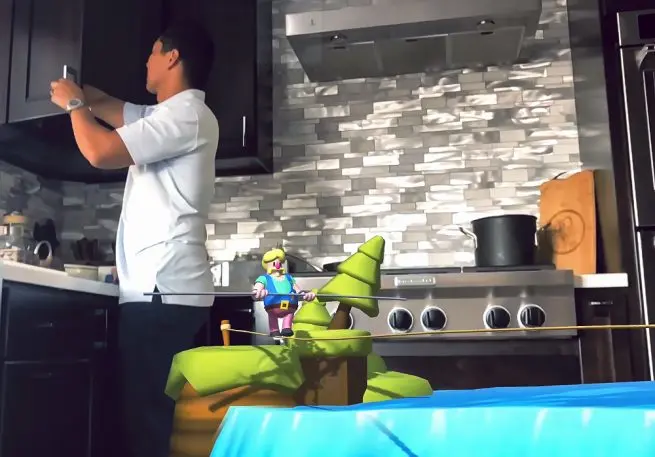
Next, Milk sees the company adding more features, like the ability to create forking storylines. And maybe one day, characters will be imbued with enough artificial intelligence to converse with kids outside of a script.
More than anything, Milk doesn’t want the app or its stories to feel like what he calls a “marvelous novelty,” in which someone might watch a story once, but they never come back to it. His ambition for Wonderscope is to create a platform that other people can use to tell their stories, too. “For it to be foundational, you need to be able to build thousands of other stories on top of it,” Milk says.
Wonderscope is free to download on iOS 11 and works on iPhone 6S or newer, 2017 iPad or newer, or iPad Pro. The app comes with one free story, and subsequent stories are $4.99 each.
Recognize your brand’s excellence by applying to this year’s Brands That Matter Awards before the early-rate deadline, May 3.
